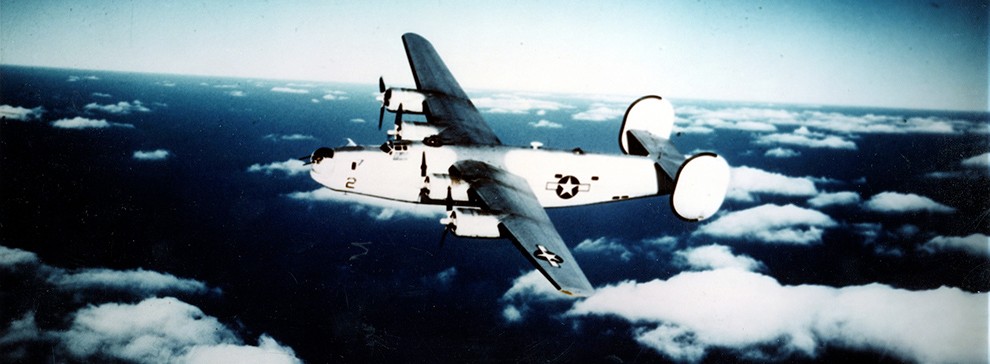
PB4Y: Liberator and Privateer
With PBY Catalina, and other flying-boat limitations the U.S. Navy pursued ladn-based bombers to fly long-range missions and patrols over water to attack shipping and submarines. Designated PB4Y-1, versions of the B-24 Liberator were used by the U.S. Army Air Forcees. The aircraft began service in 1942. The "4" stood for the fourth bomber design by Consolidated Aircraft. In 1943, tests began on the Privateer version, PB4Y-2. This version had a lenthened fuel fuselage, single tall fin and rudder. The first versions of the Privateer flew in September 1943, with proper versions arriving in March 1944.
A noteable use of the Liberator aircraft in World War II was during the Battle of the Atlantic where they were used in tandem with submarines and destroyers to hunt and destroy German U-boats. THe aircraft was also used for anti-ship patrols and photographic reconnaissance in the Pacific. Privateers flew for the U.S. Navy into the 1950s and received designations of P4Y-2, P4Y-2B, and P4Y-2S. Later versions of the Liberator were utilized as a target drone and designated P4Y-2K. In 1962, the last designated verision of a Liberator was QP-4B.
Image: 80-G-K-5175 (Color): Consolidated PB4Y-1 "Liberator" Patrol Bomber in flight circa 1943-45. Official U.S. Navy photograph, now in the collections of the National Archives.



